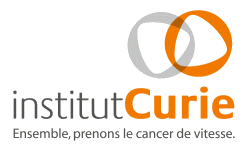
The web supplement to
Sylvie Troncale et al. 2012



|
|


|
| NormaCurve: a SuperCurve-based method that simultaneously quantifies and normalizes Reverse Phase Protein Array data |
| S. Troncale1,3,4, A. Barbet2, L. Coulibaly2, E. Henry2, B.He2, E. Barillot1, T. Dubois2, P.Hupé1,3,4,5, L. de Koning2 |
|
1Institut Curie, 26 rue d'Ulm, Paris, F-75248 France 2Institut Curie, Department of translational research, Paris, F-75248 France 3INSERM, U900, Paris, F-75248 France 4Mines ParisTech, Fontainebleau, F-77300 France 5CNRS UMR144, Paris, F-75248 France * P. Hupé and L. de Koning co-supervised the work presented here and thus share the last authorship. |
|
Abstract Motivation Revere phase protein array (RPPA) is a powerful dot-blot technology that allows studying protein expression levels as well as post-translational modifications in a large number of samples simul-taneously. Yet, correct interpretation of RPPA data has remained a major challenge for its broad-scale application and its translation into clinical research. Satisfying quantification tools are available to assess a relative protein expression level from a serial dilution curve. However, appropriate tools allowing the normalization of the data for external sources of variation are currently missing. Results Here we propose a new method, called NormaCurve, that allows simultaneous quantification and normalization of RPPA data. For this, we modified the quantification method SuperCurve in order to include normalization for (i) background fluorescence, (ii) variation in the total amount of spotted protein and (iii) spatial bias on the arrays. Using a spike-in design with a purified protein, we test the capacity of different models to properly estimate normalized relative expression levels. The best performing model, NormaCurve, takes into account a negative control array without primary antibody, an array stained with a total protein stain and spatial covariates. We show that this normalization is reproducible and we discuss the number of replicates that are required to significantly detect a given fold-change. We thus provide a ready-to-use method for robust and reproducible normalization of RPPA data, which should facilitate the interpretation and the development of this promising technology. . |
| Download data: | ||
| Raw data file (.txt) | Get it | |
| Normalized data file (.xls) | Get it | |
| Readme for rawdata (.pdf) | Get it | |
| Readme for normalized data (.pdf) | Get it | |
| data file from MicroVigene | Get them (tar.gz) | |
| package NormaCurve | Get them (tar.gz) |
| Last modified June 23 2025 13:20:11 |